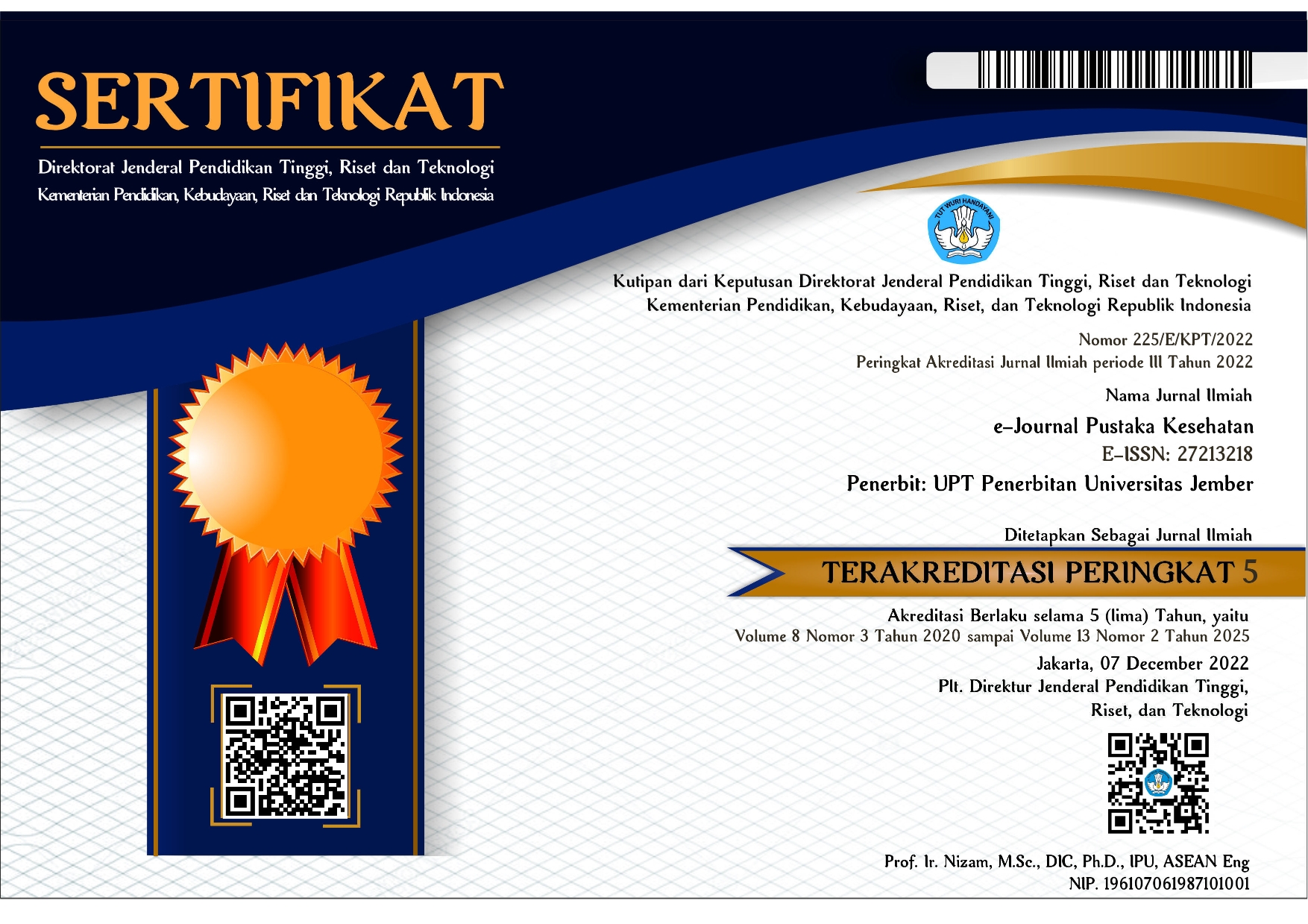Studi Kasus pada Penderita Bipolar Disorder Menggunakan Pendekataan Model Keperawatan Stuart Stress Adaptation di Probolinggo
Case Study of Bipolar Disorder Patients Using Nursing Model Approach: Stuart Stress Adaptation in Probolinggo District
DOI:
https://doi.org/10.19184/pk.v11i3.16056Keywords:
Bipolar Disorder, Stuart Stress Adaptation, Anxiety and Low Self-EsteemAbstract
The problem that is often faced by people with bipolar disorder is that they cannot control the emotions and feelings they feel because they do not know the cause and also how to cope or respond when patients experience both episodes. The purpose of this study is to identify problems associated with predisposing and precipitation factors in order to get the right diagnosis. The research design used in this study is a case study. Predisposing factors include biological factors, loss of objects, personality, learning, and behavior. Precipitation factors in patients include loss, life events, roles, and physiology. Diagnosis The problem is based on complaints experienced by patients and those closest to them, anxiety and low self-esteem. The intervention that has been done by researchers to patients or participants for several weeks the patient is quite independent. Efforts can be made to improve the health quality of patients themselves by providing psychoeducation and nursing interventions. Humans are a denial of depression, individuals who experience mania are dominated by id with few manifestations of the super ego until the individual experiences a cycle back to the normal state or depressive phase of bipolar disorder.
Downloads
References
[2] Videbeck S. 2011. Psychiatric Mental Health Nursing. Ed 5. USA: Lippincott.
[3] Ritchie, Rose. 2018. Mental Health. Diakses dari https://ourworldindata.org/mental-health#empirical-view pada 25 Juni 2019 pukul 06.00
[4] Kementerian Kesehatan RI. 2018. Hasil Utama Rikesdas 2018. Kementerian Kesehatan: Badan Penelitian dan Pengembangan Kesehatan
[5] Fithriyah I, Margono H. 2013. Gangguan Afektif Bipolar Episode Manik dengan Gejala Psikotik Fokus pada Penatalaksanaan. Diakses pada http://journal.unair.ac.id/download-fullpapers-psikiatric27896aa80full.pdf 28 Februari 2019.
[6] Townsend, M. 2009. Psychiatric Mental Health Nursing: Consepts of Care in Evidence-Based Practice. Ed 6. USA: FA Davis Company.
[7] National Institute of Mental Health. 2015. Bipolar Disorder. Diakses dari https://www.nimh.nih.gov/health/publications/bipolar-disorder/index.shtml#pub1 pada 26 Maret 2019 pukul 19.00
[8] Butler, 2018. Treatment for Bipolar Disorder in Adults: A Systematic Review. USA:AHRQ. No. 18-EHC012-EF
[9] Panggabean, Laurentius M, Rona D. (2015). Apakah Aku Bipolar? 100 Tanya Jawab DenganPsikiater + Bedah Kasus. Jakarta: Gramedia Pustaka Utama
[10] Granek, dkk. 2016. Living with Bipolar Disorder: The Impact on Patients, Spouses, and Their Marital Relationship. Journal Bipolar Disorder. 18 (2). https://doi.org/10.1111/bdi.12370
[11] Yusuf, dkk. 2015. Buku Ajar Keperawatan Kesehatan Jiwa. Jakarta: Salemba Medika
[12] Stuart GW. 2013. Principles of Psychiatric Nursing. 10th edition. Mosbu: Elsavier.
[13] Ramadhan, Syahrudin. 2015 Gambaran Koping Stress pada Individu Bipolar Dewasa Awal. Jurnal Psikologi Universitas Indonesia Timur
[14] Baradero, dkk. 2015. Kesehatan Mental Psikiatri. Jakarta: EGC. ISBN978-979-044-633-5
[15] Daggenvoorde, dkk. 2015. A Qualitative Study of Nursing Care for Hopitalized Patients with Acute Mania. Diakses pada http://dx.doi.org/10.1016/j.apnu.2015.02.003 27 November 2019
Downloads
Published
Issue
Section
License
e-Journal Pustaka Kesehatan has CC-BY-SA or an equivalent license as the optimal license for the publication, distribution, use, and reuse of scholarly work. Authors who publish with this journal retain copyright and grant the journal right of first publication with the work simultaneously licensed under a Creative Commons Attribution-ShareAlike 4.0 International License that allows others to share the work with an acknowledgment of the work's authorship and initial publication in this journal.







